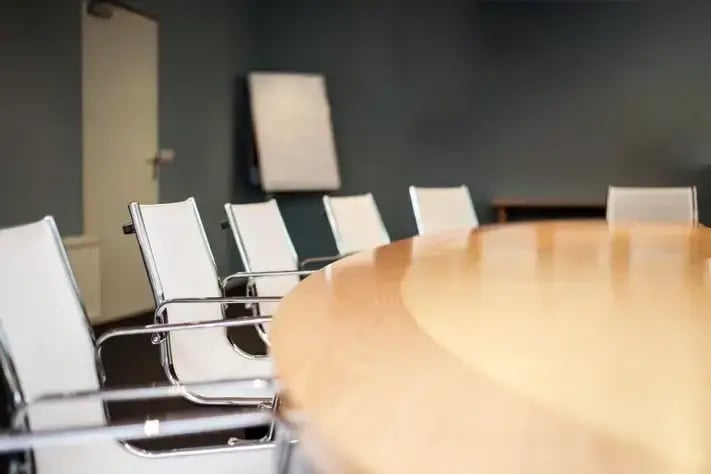2 MIN READ
Have you heard of 'ghost meetings'?

Imagine a situation in a large organization with 500 employees and around 50 meeting rooms. Employees often book rooms through tools like Outlook, but what happens when a reserved room sits empty because no one shows up? This phenomenon, known as a 'ghost meeting,' is a widespread issue—and it causes more disruption than you might think.
Ghost meetings create a ripple effect across the office. Facility managers may see high booking numbers and assume rooms are being used effectively. But in reality, utilization is often much lower, as many bookings don’t result in occupied rooms. As a result, employees spend time searching for available rooms that appear occupied but are actually empty.
Booking panels outside meeting rooms often add to the issue. They display the room as ‘reserved,’ while employees checking their calendars believe it’s occupied, unaware that the room is actually vacant.
To address this, some companies have added more meeting rooms or smaller ‘huddle rooms’ to make it easier to find available spaces. Others have installed booking panels that require check-ins to hold the reservation. However, increasing room numbers or adding manual check-ins isn’t always the most effective solution.
A Smarter Solution for a More Sustainable Office
In an era where sustainability is high on the agenda, efficient space utilization is more important than ever. Buildings account for around 40% of global CO2 emissions, making optimal office space usage essential. Instead of adding more rooms, a smarter approach to space utilization can benefit both the environment and the organization.
Imagine an alternative solution: integrating a real-time workspace tool, like the myBLDNG app, with advanced sensor technology. Employees can easily check seat and room availability in real-time via mobile or computer, without needing to interact with displays or apps. The platform’s flexibility allows it to connect with various sensors, such as motion, IoT, and people-counting sensors, or even sensors already embedded in existing video conferencing systems.
This solution automates room release, so an unused room can be freed up after a set period—say 10, 20, or 30 minutes. The same can be applied to reserved workstations, ensuring optimal space usage.
Enhancing User Experience and Gaining Valuable Insights
User experience is key. The best technology should be easy to use, ideally minimizing or eliminating manual steps. By combining sensors with real-time software, users don’t need to check in manually to secure a room—everything happens automatically in the background, allowing them to focus on their work.
This solution also provides management with valuable insights into how office spaces are used. It enables identification of peak times, the most popular room types, and optimization of spaces based on actual data. The result? Employees experience a more productive workday, spending less time searching for available rooms, while management gains data-driven insights to create a more efficient and sustainable work environment.
Would you like to learn more about how these solutions can benefit your business? Feel free to get in touch!"